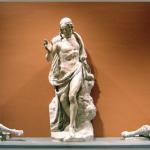Through authors like C. S. Lewis and J. R. R. Tolkien, fantasy literature has not only reached a mass audience, but it is widely recognized as a vehicle for addressing critical issues of culture, and of religious debate. But besides those celebrities, plenty of other authors deserve our attention.
One long standing favorite of mine is the Scottish author Neil M. Gunn (1891-1973), who is all but unknown in the US although, as we might say, he was world famous in Scotland. In the 1940s, he addressed themes quite similar to those in famous Lewis books like That Hideous Strength (1945), and arguably, he accomplished his goals quite as thoroughly. Please take this as a major recommendation.
In the war years, Gunn created his famous characters old Hector, the Highlander, and his good friend, young Art. The two wandered through the bucolic countryside, they fished and chatted. Critics lamented Gunn’s failure to address the key issues of his time, that dreadful age of totalitarianism and violence. And then in 1944, Hector and Art returned in a still overwhelming novel called The Green Isle of the Great Deep.
Here is a very over-simplified version of the story. Hector and Art fall into a pool, and find themselves in a mysterious land called the Green Isle of the Great Deep, a kind of alternative Highlands. That should in fact be wonderful news, as this is the Celtic Paradise, where the blessed dead feast on rich foods, and every tree gives its bounty of fruits. But something has gone terribly wrong. This is a deeply bureaucratic, repressed, and joyless society under rigid bureaucratic supervision and constant surveillance. In their pursuit of perfection, the elites have “reformed” the Green Isle into a model, rational world under their control, where they can snuff out any dissidence through their ruthless powers of interrogation and mental remolding or re-education. Human wisdom has become grotesquely segregated from knowledge, and from morality or compassion. Utopian visions have produced a kind of Hell:
They have to destroy, because wisdom is always beyond logic at any moment They have to destroy because though. as you say, their plan for running affairs is smooth, and their concept of the corporate mind permits of a logical exposition, yet as you also say, beneath their plan lies that belief in its logic which always grows merciless. So it has always been. And no matter with what force and cunning the plan is imposed there will be those who will rise against it. And bitter and terrible then is that rising.
The new society is sometimes termed a symbol of fascism, but in fact Gunn was deeply influenced by Arthur Koestler’s Darkness at Noon, about the Stalinist show trials, and he was writing at least as much about Communism or socialism. It also shows the influence of Huxley’s Brave New World.
Gunn’s book is about the integrity of human personality in an age when political masters can reshape it seemingly at will. It is about the means of controlling and snuffing out human decency and individuality. And it very effectively uses the symbol of food as a means of totalitarian control. In the Green Isle, rich fruit abounds, but the residents cannot eat it because they are forced to consume the foods processed by the state, after which any natural alternative makes them sick. The book borrows extensive Judeo-Christian metaphors about the Tree of Knowledge, and eating the apple. Those sections on food seem to draw on another fantasy classic that I love dearly, namely Lud in the Mist (1926) by Hope Mirrlees, but that is another story.
In his character Mary, Gunn draws massively on Catholic visions of the Virgin, especially in their Gaelic form.
Under interrogation, Old Hector comes close to succumbing to the new order, but Young Art escapes, and roams across the territory. In some powerful passages, Gunn shows Art becoming a legendary figure, an Arthur, about whom people tell wild and glorious tales. As with Tolkien, this is a superb book about the nature of legend and mythology.
As a legend, Art provokes the interest of the absentee lord of the Green Isle, God Himself, who is induced to investigate what has become of his other creation. And being a Gunn novel, the Almighty arrives to address Hector in the most polite and formal Gaelic speech, asking delicately after his health and his friends. If the book is not explicitly Christian, that vision of God manifesting himself in the world remains one of the best of its kind in modern literature, and the most hair-raising.
The book is a brilliant meditation on individual identity in a totalitarian, corporate, age, and the nature of freedom. It’s about elitism and democracy, and the schism between wisdom and knowledge. It is a defense of traditional communities against radical modernity, informed by a kind of anarchism. It is about the love of small places, small nations, and ancient ways. The Green Isle of the Great Deep is so deceptively simple, and so rich, so – well – deep.
G.K. Chesterton would have loved it, and that is very high praise indeed.













